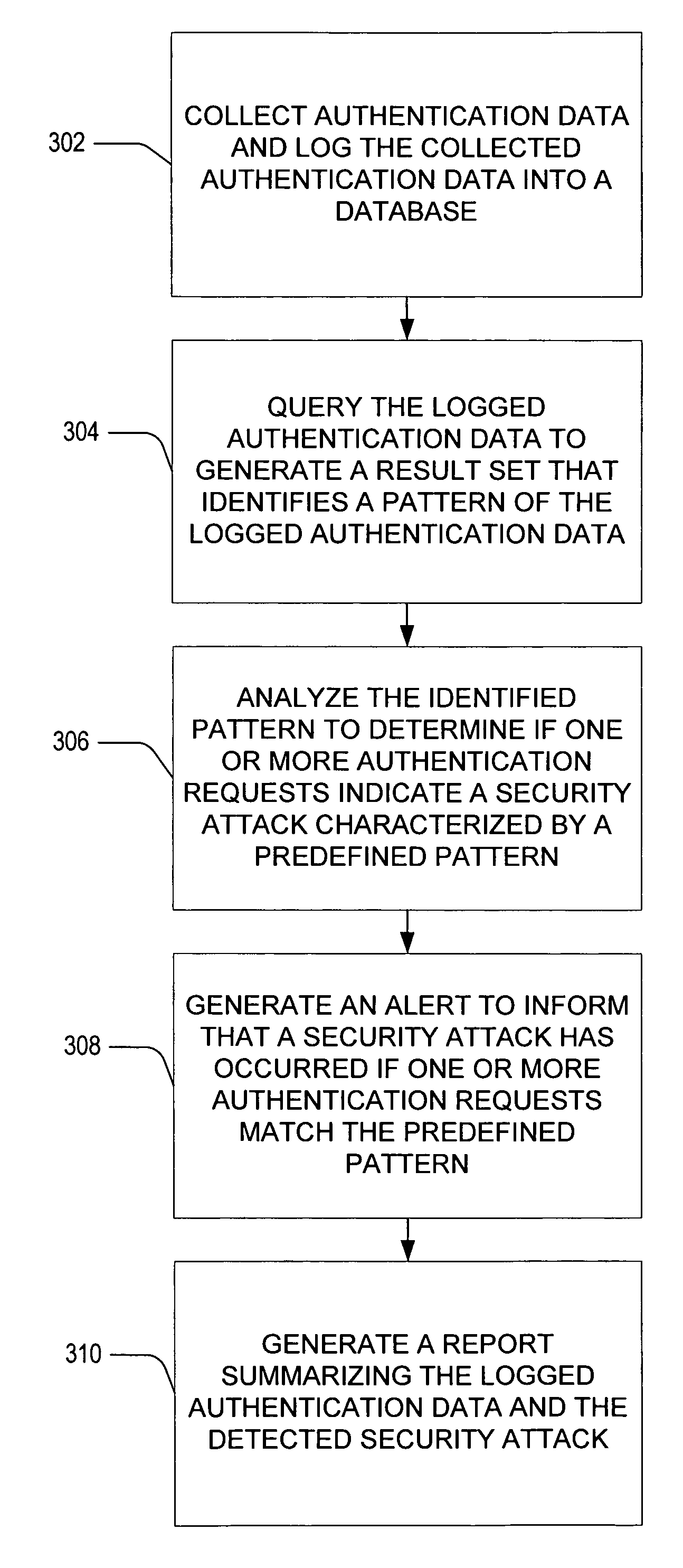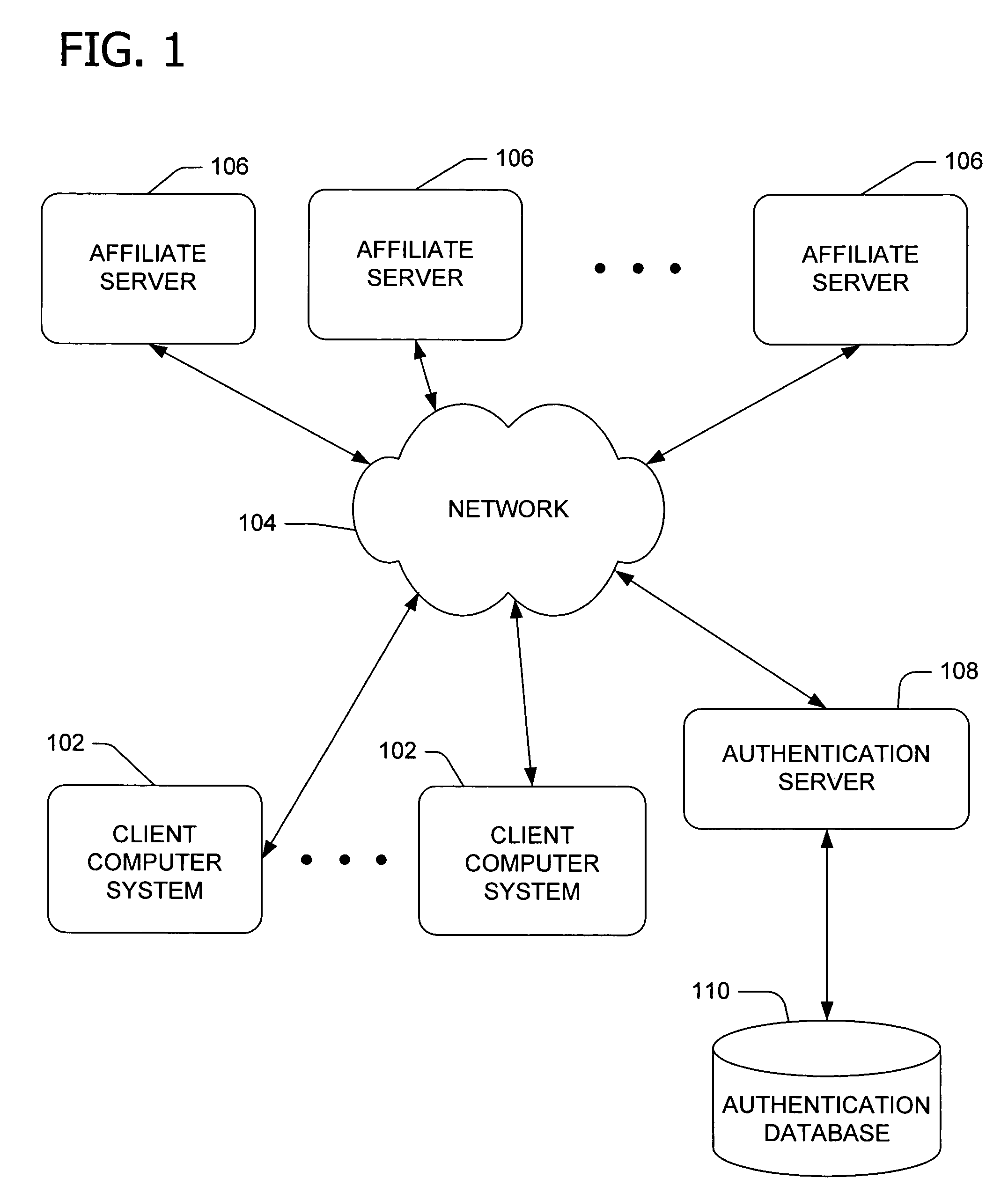Security attack detection and defense
a technology of security attack and detection, applied in the field of computer security, can solve the problems of increasing the probability that one of these authentication credentials would be successfully penetrated, reducing the probability of attack, so as to achieve the effect of convenient implementation
- Summary
- Abstract
- Description
- Claims
- Application Information
AI Technical Summary
Benefits of technology
Problems solved by technology
Method used
Image
Examples
Embodiment Construction
Exemplary Network Environment
[0022]Referring first to FIG. 1, a block diagram illustrates one example of a suitable network environment in which embodiments of the invention may be utilized. Embodiments of the invention relate to cross-network collaboration between web sites as part of a distributed, multi-site user authentication system. Such services provide a user with the ability to access one or more participating web sites or resources with a single sign-in.
[0023]According to one embodiment, the invention includes collecting authentication data from an authentication service. The authentication data relates to a plurality of authentication requests communicated to the authentication service to authenticate or validate one or more users of the authentication service. In an embodiment of the invention, the collected authentication data is then stored in a database or other memory area as a log of the authentication service. An operator may accordingly search the stored authentic...
PUM
 Login to View More
Login to View More Abstract
Description
Claims
Application Information
 Login to View More
Login to View More - R&D
- Intellectual Property
- Life Sciences
- Materials
- Tech Scout
- Unparalleled Data Quality
- Higher Quality Content
- 60% Fewer Hallucinations
Browse by: Latest US Patents, China's latest patents, Technical Efficacy Thesaurus, Application Domain, Technology Topic, Popular Technical Reports.
© 2025 PatSnap. All rights reserved.Legal|Privacy policy|Modern Slavery Act Transparency Statement|Sitemap|About US| Contact US: help@patsnap.com



